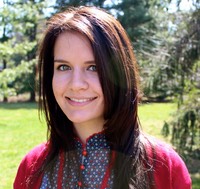
Lori Tunstall
Dept. Civil & Env. Eng.
Eng. Quad. E-226
Princeton University
Princeton, NJ 08544 USA
Project: Structure & Properties of C-S-H
I began my graduate studies as a PhD candidate in the department of Civil and Environmental Engineering in 2010. My research began by studying the influence of fly ash on the durability of concrete. This lead to more fundamental questions of the interaction of air entraining agents in concrete and how these affect air void shell formation and ultimately durability.
Cement is a significant contributor to greenhouse gas emissions and is also the most expensive material in concrete. By replacing some cement with an alternative material, both economic and environmental costs are mitigated. In many ways, fly ash (a byproduct from burning coal) is an effective candidate. Since it is a waste product, if it is not recycled it must be disposed of, occupying already limited landfill space. Additionally, it has been shown to improve many properties of concrete.
Although fly ash is an ideal supplementary material in many ways, it has been shown to interfere with air entrainment in concrete systems. Without proper air entrainment, when the concrete is exposed to freezing conditions, the durability of the concrete is compromised.
Using surface tension measurements, I have demonstrated that four distinct air entraining agents (AEAs) adsorb onto high carbon class F fly ash at concentrations over 10 times higher than the recommended dosage provided by the manufacturer (see the sample data here).
Using the drop weight method, surface tension measurements are taken on water/AEA solutions at different concentrations of AEA. The experiment is then repeated for filtrates from water/AEA/ash solutions. Without adsorption, the surface tension is expected to decrease with increase in AEA concentration. If the AEA is adsorbing onto something in the ash, the surface tension will not begin to reduce until the there is enough AEA in the solution to compensate for the loss of AEA due to adsorption.
I have also used surface tension to demonstrate the differing interaction behavior of each AEA subject to various chemical environments designed to isolate features of a real cement pore solution. These experiments indicate that AEA behavior is distinct, even though they are recommended for the same applications. For example, the two carboxylate AEAs tested are sensitive to ionic strength changes in the solution, but are relatively resistant to interaction with calcium when compared to the sulfonate and linear carboxylate AEAs. These interactions most likely are important in anticipating the quality of shell formation around air voids.
Work in the immediate future will include correlation of surface tension experiments with the foam index test, analysis of the carbon present in the fly ash, determining the molecular weight for each AEA for further quantitative analysis, study of the air void shells formed by different AEAs, and measurement of freeze-thaw resistance for concretes made with the different AEAs.
My research is supported by NSF Award CMMI-1335320 and was previously supported by ARRA Stimulus Funding through NIST. I am grateful for the opportunity to study and research among such brilliant scholars so a warm thank you to all who have made this possible!